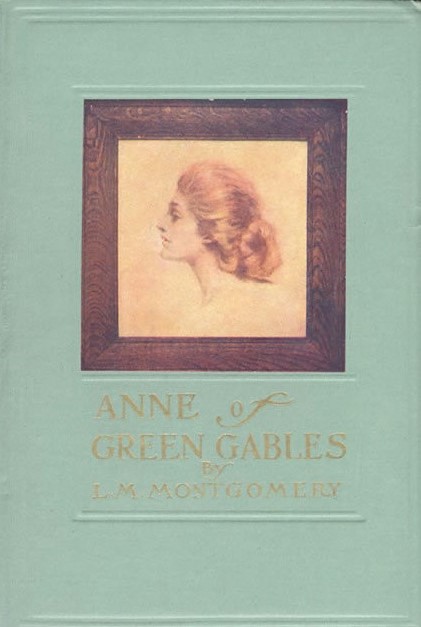Image courtesy Wikimedia Commons
“Elderly couple apply to orphan asylum for a boy. By mistake a girl is sent to them.”
This one line summed up Lucy Maud Montgomery’s notes for the book that was to become one of her most beloved works, and an instant classic of children's fiction. Celebrating the 100th anniversary of its publication last year, Anne of Green Gables (and its seven sequels) continue to delight readers of all ages even today.
Described by Mark Twain as “the dearest and most moving and delightful child since the immortal Alice
As the series progresses, we follow Anne as she lands her first job as a country schoolmarm, goes on to earn her B.A., and negotiates the perils involved in matters of the heart. The last three books in the series gradually shift focus from Anne onto her children, with the very last set in the time of the first World War.
Resist the temptation, Gentle Reader, having read this far, to write off the books as Ye Olde Chick-Lit for teenagers, because nothing could be farther from the truth.
For one, the books have aged remarkably well, considering that they were written at a time when the motor car was only just being thought of. A century later, human nature remains startlingly unchanged; men and women live and love and hate and die just the same as they used to in the Good Old Days. (Which seems to paint a rather depressing picture for the future of our species, but I digress.) Anne’s world is peopled with a host of unforgettable characters, and village busybodies and besotted swains alike spring to life in vivid technicolor under Montgomery
The author pairs this unerring gift for characterization with some of the best prose seen this side of “serious” fiction. It is particularly after the first three books- when the main characters have all been established, and she is free to focus on the stories- that Montgomery
Random Quotes:
“I read it to Marilla and she said it was stuff and nonsense. Then I read it to Matthew and he said it was fine. That is the kind of critic I like.”
“Mrs Lynde looked upon all people who had the misfortune to be born or brought up elsewhere than in Prince Edward Island Boston and neither angels nor principalities nor powers could have convinced her that the whole United States
"On her first day back from college, people told Anne she hadn't changed much, in a tone which hinted they were surprised and a little disappointed she hadn't."
“Two worthy ladies descended upon Anne one violet dusk and proceeded to do what in them lay to prick the rainbow bubble of her satisfaction. If Anne thought she was getting any particular prize in her young man, or if she imagined that he was still as infatuated with her as he might have been in his salad days, it was surely their duty to put the matter before her in another light. Yet these two were not enemies of Anne; on the contrary, they were really quite fond of her, and would have defended her as their own young had anyone else attacked her. Human nature is not obliged to be consistent.”
"It does not do to laugh at the pangs of youth. They are very terrible because youth has not yet learned that ‘this, too, will pass away.’ "
"Rilla was fond of italics, as most girls of fifteen are."
Verdict:
A keeper. Get the entire set, in hardcover if possible, because you are definitely going to wear them out. The Anne of Green Gables series will make a fantastic gift for a young child or teenager; or for a gal pal- most of the women I know cite this as one of the defining books of their girlhood. This writer, for one, knows most of the books off by heart J

No comments:
Post a Comment